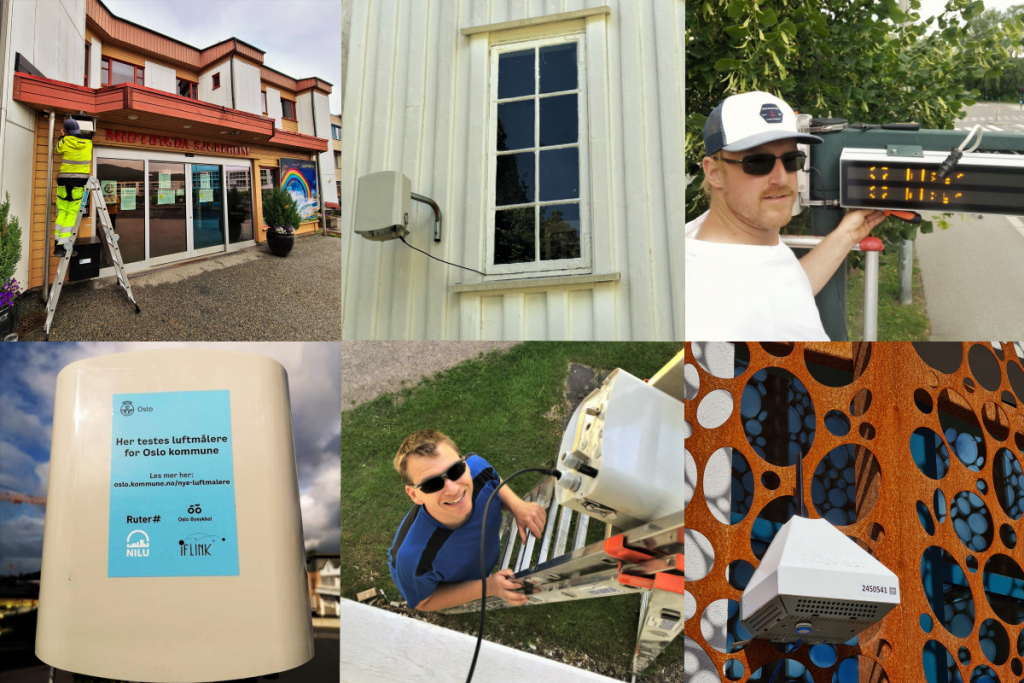We are preparing air quality measurements with low-cost sensors in Oslo and Bergen. In mid-August we started calibrating the instruments at the monitoring stations Kirkeveien and Sofienberg in Oslo. We deployed 25 low-cost sensors from different suppliers. First, they have to be calibrated before they can be deployed over the whole city. In Oslo we collaborate with Ruter, who provide us access to their bus/tram/metro shelters for delpoying low-cost sensors.
At the same time we are also deploying low-cost sensors for calibration at the monitoring stations Danmarks plass and Klosterhaugen in Bergen. Here, we will test 15 instruments before they will be used to complement the air quality monitoring network in Bergen.
Once the calibration periods in Oslo and Bergen are completed, the iFLINK project will use these low-cost sensors to set up a dense sensor network in Bergen, Bærum, Drammen, Kristiansand and Oslo during spring 2021.
The iFLINK project is collaborating with several ongoing European projects and activities. One of them is sensEURCity, a project coordinated by EU’s Joint Research Centre in Ispra, Italy. Here, Oslo is a cooperating city, together with Antwerp, Belgium and Zagreb, Croatia. Via the sensEURCity project we have 34 AirSensEur low-cost sensors available that will be used in Oslo until March 2021. In this project we also cooperate with Oslo Bysykkel, who are providing their bicycle racks for deploying our instruments.

 The work on rolling out the iFLINK sensor network continues during summer! Soon there will be more than 100 sensors placed in Bergen, Bærum, Drammen, Kristiansand and Oslo.
The work on rolling out the iFLINK sensor network continues during summer! Soon there will be more than 100 sensors placed in Bergen, Bærum, Drammen, Kristiansand and Oslo.